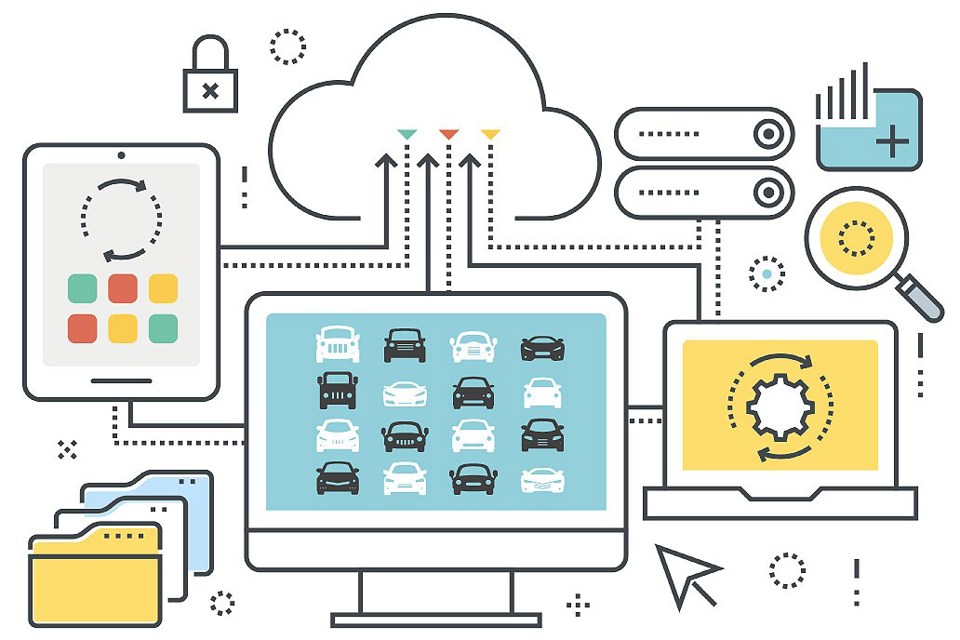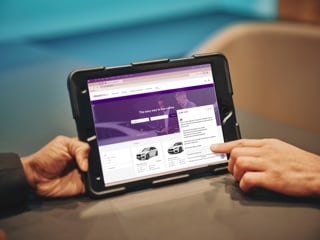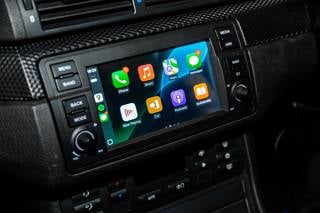Sales, finance, parts, inventory, marketing, workshop loading, even automated tax returns – dealership management systems (DMS) offer dealers a multitude of abilities and functions. However, many dealers will have third-party systems already carrying out one or more of those functions, not to mention HR and payroll, imaging and stock uploads, F&I compliance and corporate intranets.
So what are DMS providers doing to enable dealers to better integrate these systems more effectively with their own DMS?
Paul Humphreys, managing director of Incadea UK, which is owned by Cox Automotive, said his company makes it as easy as possible for a third-party system to connect with the DMS through an interface.
“That will allow full integration for any third-party system into or out of our DMS, subject to data requirements,” he said. “At Incadea, we have built an interface that can be used by all third-party systems, including Cox Automotive’s own products.”
Humphreys said Incadea also provides third parties with clear instructions about how to connect with its DMS and keeps them updated on any changes to the process.
“Dealers use a lot of different third-party systems, some of which may be bespoke, so we have tried to be as flexible as possible with the design of our interface,” he said.
“For example, Incadea is built upon a Microsoft Dynamics Navision platform, which supports many off-the-shelf HR and payroll packages, so many of these third-party systems naturally interface well with our DMS.”
Jon Skinner, director of business development at Gemini Systems, said his company is working on two systems that enable third-party integration. The first, Open System Interface (OSI), is a two-way data interface that allows third parties and manufacturers to send and receive data live into its DMS.
“We first introduced this in 2015 as a way to allow our dealers the opportunity to use best-in-breed, or manufacturer-mandated systems alongside their DMS without the need to re-key data,” said Skinner.
“This leads to reduced administration overhead, increased accuracy of data and better adoption of mandated third-party solutions.”
Skinner said several industry-leading solution providers have so far come on board with OSI, including Autoweb Design, Closeit CRM (from Cox Automotive), Keytracker, Manheim Auctions, Mondago, Reef Business Systems and 67 Degrees.
The second development is Campaign 365, an online marketing portal, providing dealers with access to many of the UK manufacturers’ marketing assets and HTML emails. The rewards of such manufacturer integration can include better support and alignment of sales and marketing activities.
“Manufacturers are always striving to ensure their dealers capitalise on the rich vein of data they have in their DMS to directly market to the customers they know and have a relationship with,” said Skinner.
“Where Campaign 365 comes into play is, we receive the marketing templates from the manufacturer and we import this into our own email template library. This allows dealers to see, modify and send campaigns to customers with the minimum of effort.
“The manufacturers benefit because they know their dealers are sending quality, well-thought-out, brand-compliant marketing emails to their customer base and the dealers benefit as they are able to easily send content-rich, good-looking HTML emails to increase footfall and profitability. It’s a win-win situation for both parties and ultimately the customer gets a consistent message from manufacturers and their local dealer that they trust.”
Manufacturer partnerships are also a key area of integration for Pinewood’s Pinnacle DMS, enabling the incorporation of additional brand-specific functionality and enhancing processes for dealers, said Neville Briggs, Pinewood’s managing director. One example of this, he said, is the use of electronic parts catalogues and warranty submission.
“The objective for the manufacturer is often to partner with a select group of DMS vendors, enhancing the processes within their network through the inclusion of
integration within their selected systems, enabling them to adopt a consistent approach,” he said.
“Partnering and integrating with manufacturers is highly valuable, from both a providers’ and a dealers’ perspective – driving more efficient and seamless processing capabilities within the DMS.”
Briggs said Pinewood has also linked up with third-party systems that enable funding vehicle stock, integrated wireless credit and debit card payments, and a range of services for dealer websites.
“Our policy is to take a holistic, business-led approach, striving towards an all-inclusive and fully integrated platform that uses the services of third parties at key moments,” he said.
“Integrating with carefully selected partners with similar values and complementary functional benefits is a key decision for us when working with third parties. We believe it is vital to select our integration partners based on systems which complement the Pinnacle platform.”
Briggs said Pinewood also supports business functions, such as data analysis applications, with feeds and data warehouse integration.
“Where integration is part of the main business process, we believe in adopting a more integral approach, as opposed to catering for a variety of separate add-on systems,” he said. “An example of this is the inclusion of vehicle images and video in Pinnacle’s vehicle administration and eVHC, allowing accurate metrics of activity and the resulting outcomes.
“By working with the right partners, we support the needs of manufacturers and dealer groups to consolidate this information.”
Mark Kelland, commercial manager at Dragon2000, said his company also looks at all available data and how it can be integrated in its DMS.
“When you look at it, there’s an awful lot of data and applications that we integrate into the DMS for our customers,” he said. “That includes HPI and Experian
integrations, enabling our customers to do their providence checks on Dragon2000 at a single data-entry point at no cost.
“Then there are advertiser and manufacturer data feeds covering parts, orders and warranty sales, as well as third-party outputs to the dealer’s own website. From our point of view as well, we have APPraise, a video sales and vehicle health check app that is fully integrated, enabling our customers to click on the links provided and it will take them back into the DMS so they can see all of their activity.
“We also integrate website bookings for servicing and prospective enquiries from websites into the CRM (customer relationship management) element of the DMS.
“Similarly, we also incorporate electronic clocking through physical workshop clocking and timings that link into the DMS.” ALEX WRIGHT



















Login to comment
Comments
No comments have been made yet.